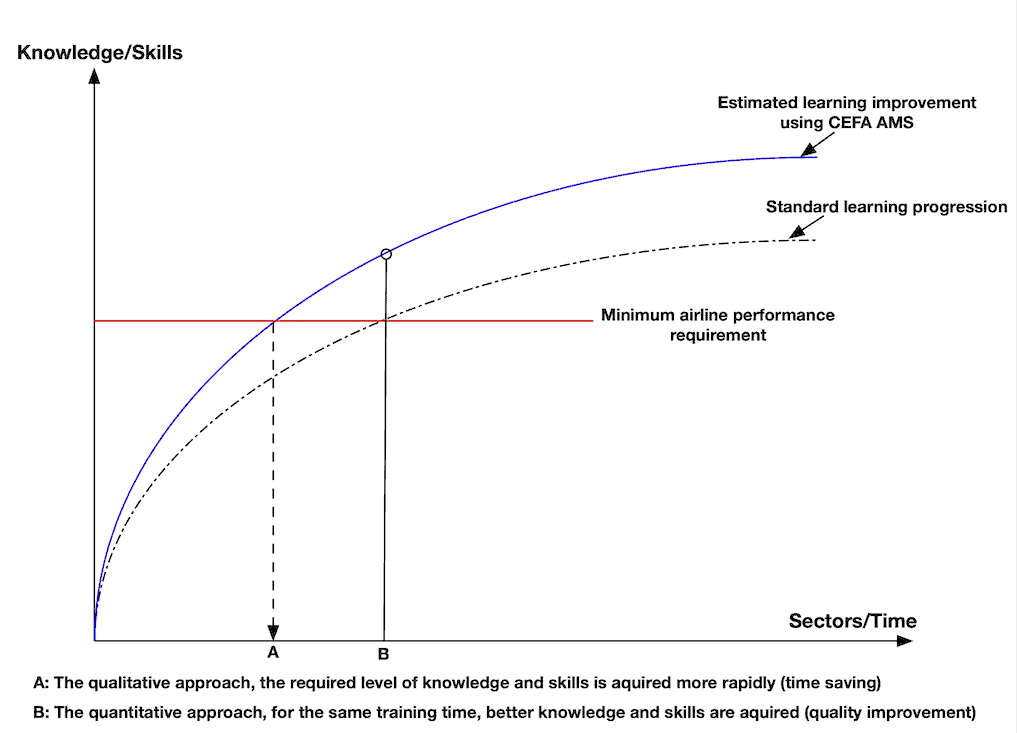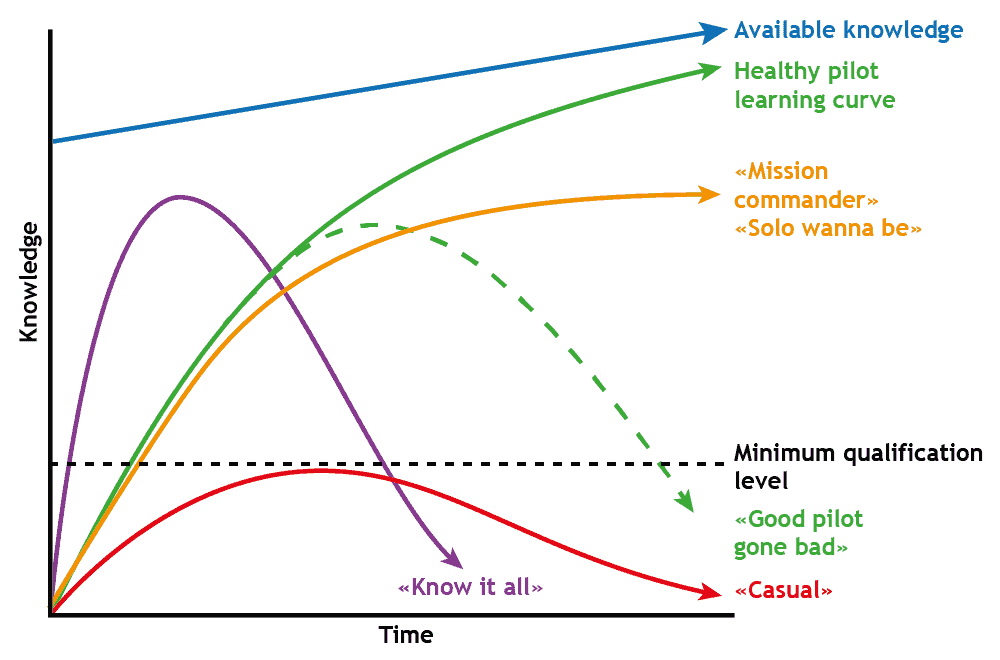An independent company with 22 years of expertise in flight data animation for Flight Safety and Pilot Training
CEFA AMS, the experience accelerator…
#PilotSkills #FlightSafety #FlightDebriefing #PilotTraining

CEFA AMS is an animation and data analysis tool offering the possibility to the pilots to replay parts of their flight or analyze in detail specific performances in an understandable form. The source of these data is the digital flight recorder.
Changing the learning curve enables two potential advantages, either an improvement in the quality or in the timing required to achieve earlier objectives for the organization.
THE QUANTITATIVE APPROACH: Variant A, the minimum requirements are reached at an earlier stage, thus economy on the training time and its related instruction cost are achieved.
THE QUALITATIVE APPROACH: Variant B, with the same amount of time/number of legs, the quality of the training is improved.
Besides the learning advantage, CEFA AMS is also a tool enabling at pilot/crew level to monitor and correct performances during standard line operation. Usually, pilots work well and are lifelong learning individual, but there are exceptions; these exceptions are those that challenge their own colleagues as crew members, and are also a problem for the whole airline because their behavior is nonstandard or non-predictable.
‘Fixing’ Problem Pilots. Find The Solution From Within (If Possible)
Having a performance monitoring tool at the crew level is also a form of self-monitoring and a mirror of the reality of own performance, enabling, at an early stage, to address issues of pilots drifting out of the acceptable standards.
A very interesting article, covering different types of deviations, has been published on the 21 of March 2017 in IKON London Magazine and is an excellent source of information and enables us to understand the way some pilots evolve or drift out of acceptable standards.
Every pilot has encountered such individuals in his/her career exhibiting forms of unhealthy behavior that can have a profound impact on flight safety.
The following curves have been published in the article mentioned below:

An extract from the following article: https://www.ikonlondonmagazine.com/fixing-problem-pilots offers detail analysis about:
- “imperious pilot” in command (PIC) who, due to his or her real or imagined exceptional skills, believes the airplane can be flown better without assistance. …
- “good pilots gone bad” These are the ones who have become so good that SOPs become optional.
- “I get along” pilots…. By accepting low expectations, these pilots demonstrate they are not interested in improving their skills or knowledge; they are not interested in raising the bar.
One of the conclusions is to “focus on the problematic behaviors, not the pilot. If, for example, you witness a pilot willfully skip a flight control check required by the flight manual and push the throttles forward to taxi, what will you do? I have never seen this, but I believe I would react thusly: Apply the brakes, bring the airplane to a stop and say, “We missed a critical step in the checklist. Let’s do that before we go any further.”
A truly professional pilot knows flying isn’t easy and requires unrelenting dedication and constant study.
The pros know they can make mistakes and lose proficiency; training is needed to remain on top of the game.
You want to know more about our services and products, or access to our blog covering various subjects about pilots, flight safety, and training? Please visit our website or contact us


Flying Skills: Unstable approach rate rose sharply – How to mitigate it?
Pilot Empowerment with Flight data